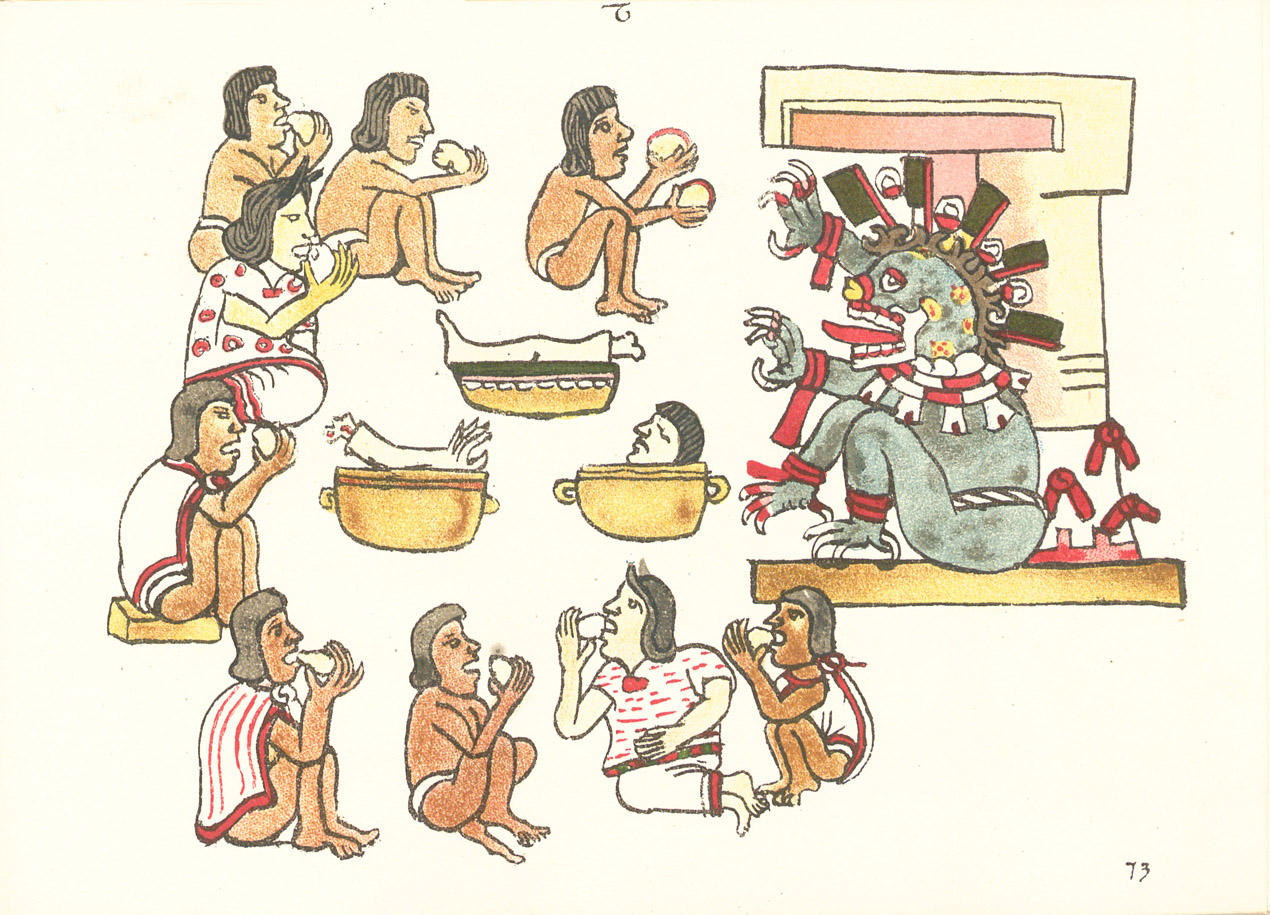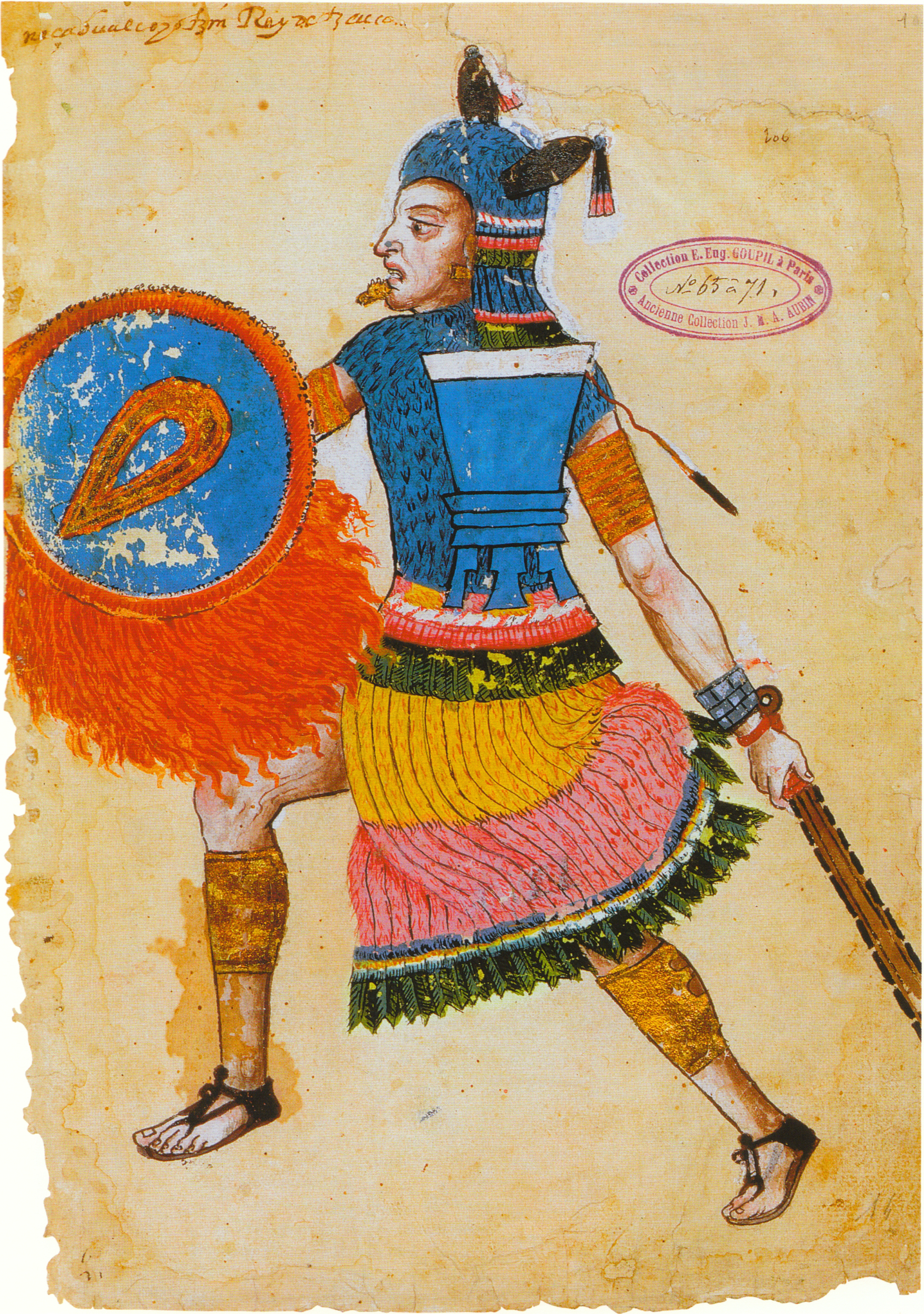|
Códice De Santa María Asunción
The ''Códice de Santa María Asunción'' is mid-16th century Mesoamerican pictorial codex, with Nahuatl glosses, containing censuses of twelve rural communities in Tepetlaoztoc, in the Acolhua area near Texcoco. The codex contains provides important information about community economic and social structure shortly after the conquest. The editors of the facsimile edition estimate the codex was created in stages, with the core glyphic depictions drawn around 1544, with householders, cadastrals of their landholdings. They posit the alphabetic Nahuatl Nahuatl ( ; ), Aztec, or Mexicano is a language or, by some definitions, a group of languages of the Uto-Aztecan language family. Varieties of Nahuatl are spoken by about Nahuas, most of whom live mainly in Central Mexico and have smaller popul ... glosses were added later over 30-year period. The glosses include names of the householder, kin relationships, land assignments, and miscellaneous annotations. A third component the co ... [...More Info...] [...Related Items...] OR: [Wikipedia] [Google] [Baidu] |
Mesoamerica
Mesoamerica is a historical region and cultural area that begins in the southern part of North America and extends to the Pacific coast of Central America, thus comprising the lands of central and southern Mexico, all of Belize, Guatemala, El Salvador, and parts of Honduras, Nicaragua and northwestern part of Costa Rica. As a cultural area, Mesoamerica is defined by a mosaic of cultural traits developed and shared by its indigenous cultures. In the pre-Columbian era, many Indigenous peoples of the Americas, indigenous societies flourished in Mesoamerica for more than 3,000 years before the Spanish colonization of the Americas began on Hispaniola in 1493. In world history, Mesoamerica was the site of two historical transformations: (i) primary urban generation, and (ii) the formation of New World cultures from the mixtures of the indigenous Mesoamerican peoples with the European, African, and Asian peoples who were introduced by the Spanish colonization of the Americas. Mesoameri ... [...More Info...] [...Related Items...] OR: [Wikipedia] [Google] [Baidu] |
Aztec Codices
Aztec codices ( , sing. ''codex'') are Mesoamerican manuscripts made by the pre-Columbian Aztec, and their Nahuatl-speaking descendants during the colonial period in Mexico. Most of their content is pictorial in nature and they come from the multiple Indigenous groups from before and after Spanish contact. Differences in styles indicate regional and temporal differences. The types of information in manuscripts fall into several broad categories: calendar or time, history, genealogy, cartography, economics/tributes, census and cadastral, and property plans. Codex Mendoza and the Florentine Codex are among the important and popular colonial-era codices. The Florentine Codex, for example is known for providing a Nahuatal narrative of the Spanish Conquest from the viewpoint of the Indigenous people, instead of Europeans. History Before the start of the Spanish colonization of the Americas, the Mexica and their neighbors in and around the Valley of Mexico relied on painted b ... [...More Info...] [...Related Items...] OR: [Wikipedia] [Google] [Baidu] |
Nahuatl
Nahuatl ( ; ), Aztec, or Mexicano is a language or, by some definitions, a group of languages of the Uto-Aztecan language family. Varieties of Nahuatl are spoken by about Nahuas, most of whom live mainly in Central Mexico and have smaller populations Nahuatl language in the United States, in the United States. Nahuatl has been spoken in central Mexico since at least the seventh century CE. It was the language of the Mexica, who dominated what is now central Mexico during the Late Postclassic period of Mesoamerican chronology, Mesoamerican history. During the centuries preceding the Spanish conquest of the Aztec Empire, the Aztecs had expanded to incorporate a large part of central Mexico. Their influence caused the variety of Nahuatl spoken by the residents of Tenochtitlan to become a prestige language in Mesoamerica. Following the Spanish conquest, Spanish colonists and missionaries introduced the Latin script, and Nahuatl became a literary language. Many chronicles, gram ... [...More Info...] [...Related Items...] OR: [Wikipedia] [Google] [Baidu] |
Census
A census (from Latin ''censere'', 'to assess') is the procedure of systematically acquiring, recording, and calculating population information about the members of a given Statistical population, population, usually displayed in the form of statistics. This term is used mostly in connection with Population and housing censuses by country, national population and housing censuses; other common censuses include Census of agriculture, censuses of agriculture, traditional culture, business, supplies, and traffic censuses. The United Nations (UN) defines the essential features of population and housing censuses as "individual enumeration, universality within a defined territory, simultaneity and defined periodicity", and recommends that population censuses be taken at least every ten years. UN recommendations also cover census topics to be collected, official definitions, classifications, and other useful information to coordinate international practices. The United Nations, UN's Food ... [...More Info...] [...Related Items...] OR: [Wikipedia] [Google] [Baidu] |
Tepetlaoztoc
Tepetlaoztoc or Tepetlaoxtoc (Nahuatl for 'tepetate-cave place', ) is an archaeological site located in the Central Mexico plateau region of Mesoamerica. It was an Aztec/Nahua settlement during the Late Postclassic period of Mesoamerican chronology, with an occupancy continuing through the Colonial period. The site is situated in the Valley of Mexico, to the northeast of Texcoco, in the municipality of Tepetlaoxtoc de Hidalgo. In the 1970s, the area was relatively undeveloped, and one could, on aerial photographs, still discern the 16th century field lines and irrigation Irrigation (also referred to as watering of plants) is the practice of applying controlled amounts of water to land to help grow crops, landscape plants, and lawns. Irrigation has been a key aspect of agriculture for over 5,000 years and has bee ... system drawn in the Codex of Santa María Asunción (manuscript in the Biblioteca Nacional) and the Codex Vergara. Likewise, one could locate many of the aldeas ... [...More Info...] [...Related Items...] OR: [Wikipedia] [Google] [Baidu] |
Acolhua
The Acolhua are a Mesoamerican people who arrived in the Valley of Mexico in or around the year 1200 CE. The Acolhua were a sister culture of the Aztecs (or Mexica) as well as the Tepanec, Chalca, Xochimilca and others. The most important political entity in ancient Mesoamerica was the Triple Alliance (Nahuatl, ''excan tlatoloyan''), founded in 1428 when the rulers of Tenochtitlan, Texcoco, and Tlacopan formed an alliance that replaced the Tepanec Empire of Azcapotzalco and eventually integrated into a single polity the most developed regions of western Mesoamerica. Because of the predominance of Tenochtitlan, it has also been called the Mexica, Aztec, or Tenochca Empire. It came to an end with the Spanish conquest of 1521. Each of the three allied kings led a group of lesser kingdoms that coincided with the three major ethnic components and political powers of previous times: the Colhuas, the Acolhua- Chichimecs, and the Tepanecs. The domain of Tenochtitlan was the sout ... [...More Info...] [...Related Items...] OR: [Wikipedia] [Google] [Baidu] |
Texcoco (altepetl)
Tetzcoco (Classical Nahuatl: ''Tetzco(h)co'' , Otomi: ) was a major Acolhua altepetl (city-state) in the central Mexican plateau region of Mesoamerica during the Late Postclassic period of pre-Columbian Mesoamerican chronology. It was situated on the eastern bank of Lake Texcoco in the Valley of Mexico, to the northeast of the Aztec capital, Tenochtitlan. The site of pre-Columbian Tetzcoco is now subsumed by the modern Mexican ''municipio'' of Texcoco and its major settlement, the city formally known as Texcoco de Mora. It also lies within the greater metropolitan area of Mexico City. Pre-Columbian Tetzcoco is most noted for its membership in the Aztec Triple Alliance. At the time of the Spanish conquest of the Aztec Empire, it was one of the largest and most prestigious cities in central Mexico, second only to the Aztec capital, Tenochtitlan. A survey of Mesoamerican cities estimated that pre-conquest Tetzcoco had a population of 24,000+ and occupied an area of 450 h ... [...More Info...] [...Related Items...] OR: [Wikipedia] [Google] [Baidu] |


